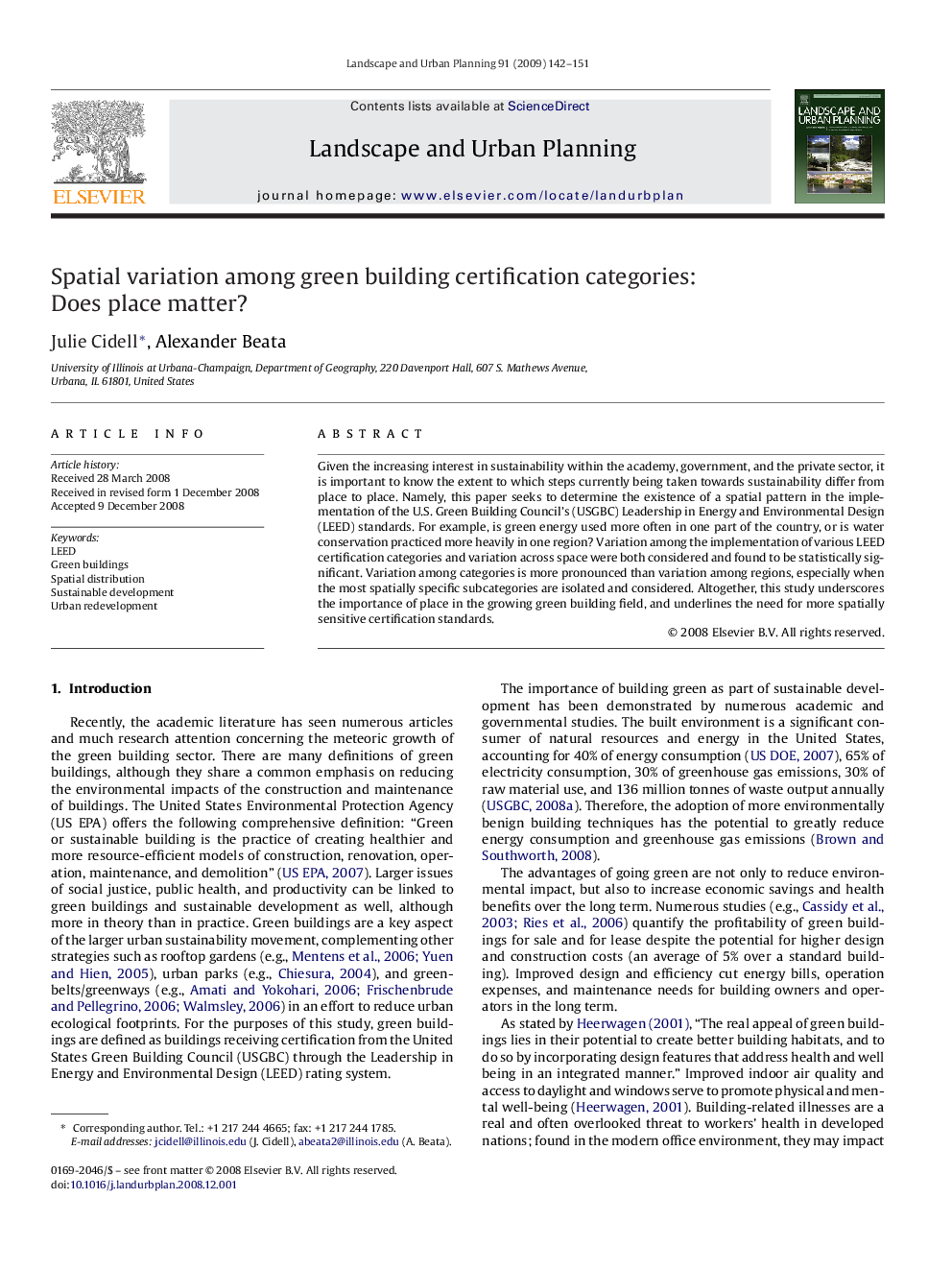| Article ID | Journal | Published Year | Pages | File Type |
|---|---|---|---|---|
| 1050323 | Landscape and Urban Planning | 2009 | 10 Pages |
Given the increasing interest in sustainability within the academy, government, and the private sector, it is important to know the extent to which steps currently being taken towards sustainability differ from place to place. Namely, this paper seeks to determine the existence of a spatial pattern in the implementation of the U.S. Green Building Council's (USGBC) Leadership in Energy and Environmental Design (LEED) standards. For example, is green energy used more often in one part of the country, or is water conservation practiced more heavily in one region? Variation among the implementation of various LEED certification categories and variation across space were both considered and found to be statistically significant. Variation among categories is more pronounced than variation among regions, especially when the most spatially specific subcategories are isolated and considered. Altogether, this study underscores the importance of place in the growing green building field, and underlines the need for more spatially sensitive certification standards.
